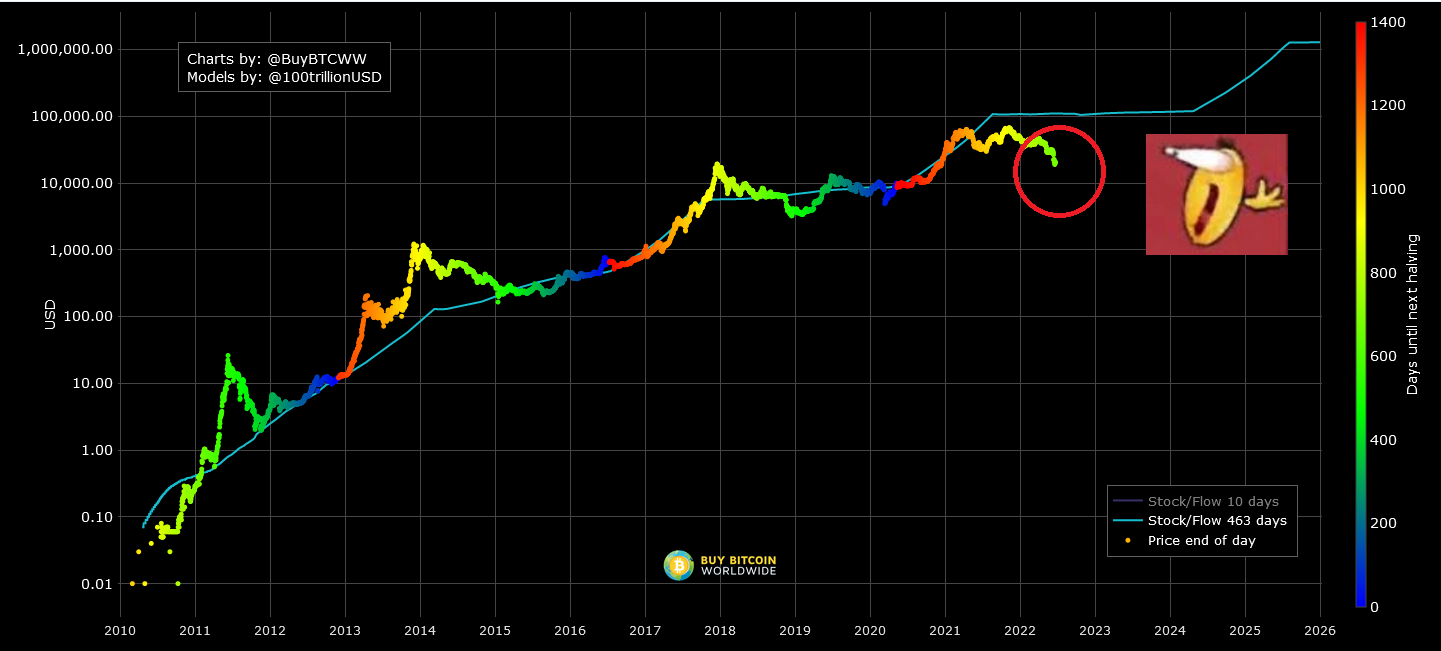The Death of S2F and Why "This time is different."

All eyes were on $BTC as it went down below 20k recently. After struggling for a while, it finally has a relief rally back to above ATH of the last cycle. While everyone is busy contemplating the next move of $BTC, let’s look at the post-mortem of the crash and “why this time is different” for the 4-years bull cycle of $BTC.
By now, we already know who sent the crypto market to Goblin Town — Terra Luna and Celsius. Terra struck first, crashing the market with de-pegging of $UST (an algorithmic stablecoin), selling 80,000 BTC reserves, and creating possibly millions of bad debt around the crypto space (especially among the institution investors). The LUNA crash caused billions of dollars lost among institutional and retail investors, which proceeded to cause cascading events of liquidation. Celsius was closed to liquidation and had to withhold the withdrawal of investors’ assets to prevent liquidation; all that happened because Celsius handled their money like a “degen.”
Obviously, Terra and Celsius’s crashes are unusual events that just randomly and spontaneously happened in the market. Or is it? Let’s have a look at the Bitcoin S2F model by PlanB, which is a tool that predicts the price of $BTC when everything goes according to plan.
The famous Bitcoin S2F model has served us crypto folks for more than 12 years now; it’s one of the most accurate indicators for predicting the price $BTC. S2F basically is a measure of the new supply of an asset that is being created over time relative to the existing supply (now apply that with Bitcoin’s supply and its halving cycle).
Recently Bitcoin S2F and PlanB Twitter account has been under fire. Things are not looking good for PlanB, and his sole honorable creation of the S2F model as the chart just proved to be wrong. It’s not the first time the bear market has disproved S2F. The S2F turns out to be a model that can’t account for certain externalities like demand, macro, covid, war et al., which PlanB confirmed on Twitter.
The market is always uncertain; expect chaos. I’m trying to say this time could be different. Bitcoin doesn’t have to have a bull cycle every four years as the debt cycle of the economy is way longer than four years. In a perfectly ordered economy, Bitcoin’s price will follow the S2F model; I think it’s just luck that prevented S2F chart from deviating earlier. As Bitcoin got more adoptions, things changed. It now has institution investors that handle crypto-assets like corrupted traditional banks, creating high leverage in the Bitcoin system. If that wasn’t enough, the booming of DeFi also created collateralized debt boosting the leverage level even higher. These are the unusual externalities Bitcoin didn’t have to face back in 2017.
Moreover, many economic experts predict this decade will be the end of the long-term debt cycle (which happens every 75-100 years). Furthermore, China is now facing housing bubble, high inflation in the west, Japan YCC, the war in Ukraine, and derivatives bubble. Simply speaking, the market has no reason to respect the Bitcoin S2F model and the bull cycle of Bitcoin every four years.